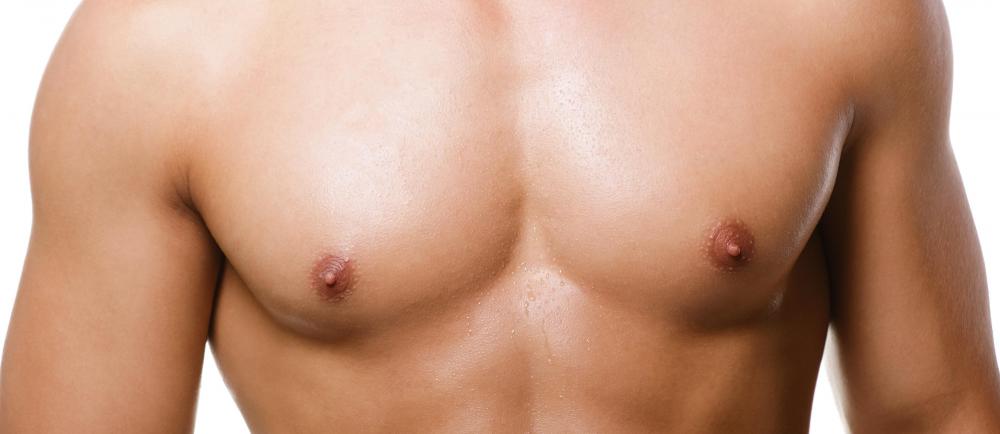At WiseGEEK, we're committed to delivering accurate, trustworthy information. Our expert-authored content is rigorously fact-checked and sourced from credible authorities. Discover how we uphold the highest standards in providing you with reliable knowledge.
What is the Anatomy of the Breast?
The front area of the chest is known as the breast. The anatomy of the breast is quite simple, and some of the different parts of the breast include the areola, the nipple, and fatty tissue. Women generally have larger breasts than men. This is primarily because one of the main functions of the breast is to feed newborn infants.
Starting from the front, one of the first noticeable features when studying the anatomy of the breast is the areola and nipple. The areola is the darkened part in the center of the front of the breast. It contains sebaceous, or oil-producing, glands referred to as Montgomery's glands. These glands release an oily substance that helps lubricate and protect a woman's areola and nipple during breastfeeding.

The nipple is located in the center of the areola. Most nipples protrude slightly from the center of the areola, but others may be flush with it or indented. Muscles at the base of the nipples cause them to become erect with certain types of stimulation, including sexual arousal and temperature changes. In the female anatomy of the breast, tiny openings in the middle of the nipple lead to milk ducts.

Although scientists who originally studied the anatomy of the breast believed that milk ducts became reservoirs just before they led out of the body, recent research has shown that this is not the case. These reservoirs, formerly known as lactiferous sinuses, were actually created when wax was injected into the opening of the milk ducts, inflating them. Instead, milk ducts lead directly from the nipple and intertwine through the breast, before connecting to milk-producing glands.

In the female anatomy of the breast, the milk-producing glands are referred to as lobules. These lobules are grouped together in bundles, called lobes. In many women, many of these glands are concentrated in the upper and outer portion of the breast. Often, these glands account for the soreness and tenderness many women experience right before the onset of their menstrual cycles.

A few days before a woman gives birth, certain hormones begin to stimulate the milk glands. These glands then begin producing a substance known as colostrum, and is rich in proteins and antibodies. A few days after a baby is born, actual breast milk production begins, and this continues until breastfeeding ceases.
Fat cells usually make up the rest of the breast. During puberty, the presence of female hormones makes the female breasts become larger. As a woman gets older, the anatomy of the breast changes even more as she becomes pregnant, and again when she goes through menopause.
The skin covering the breast is attached with a layer of connective tissue. This connective tissue is also present between the breast tissue and the muscles of the chest wall. The major and minor pectoralis are some of the muscles that lie directly behind the breasts. Other muscles under the breasts include the intercostal muscles, which are the muscles located between the ribs.
AS FEATURED ON:
AS FEATURED ON:














Discuss this Article
Post your comments